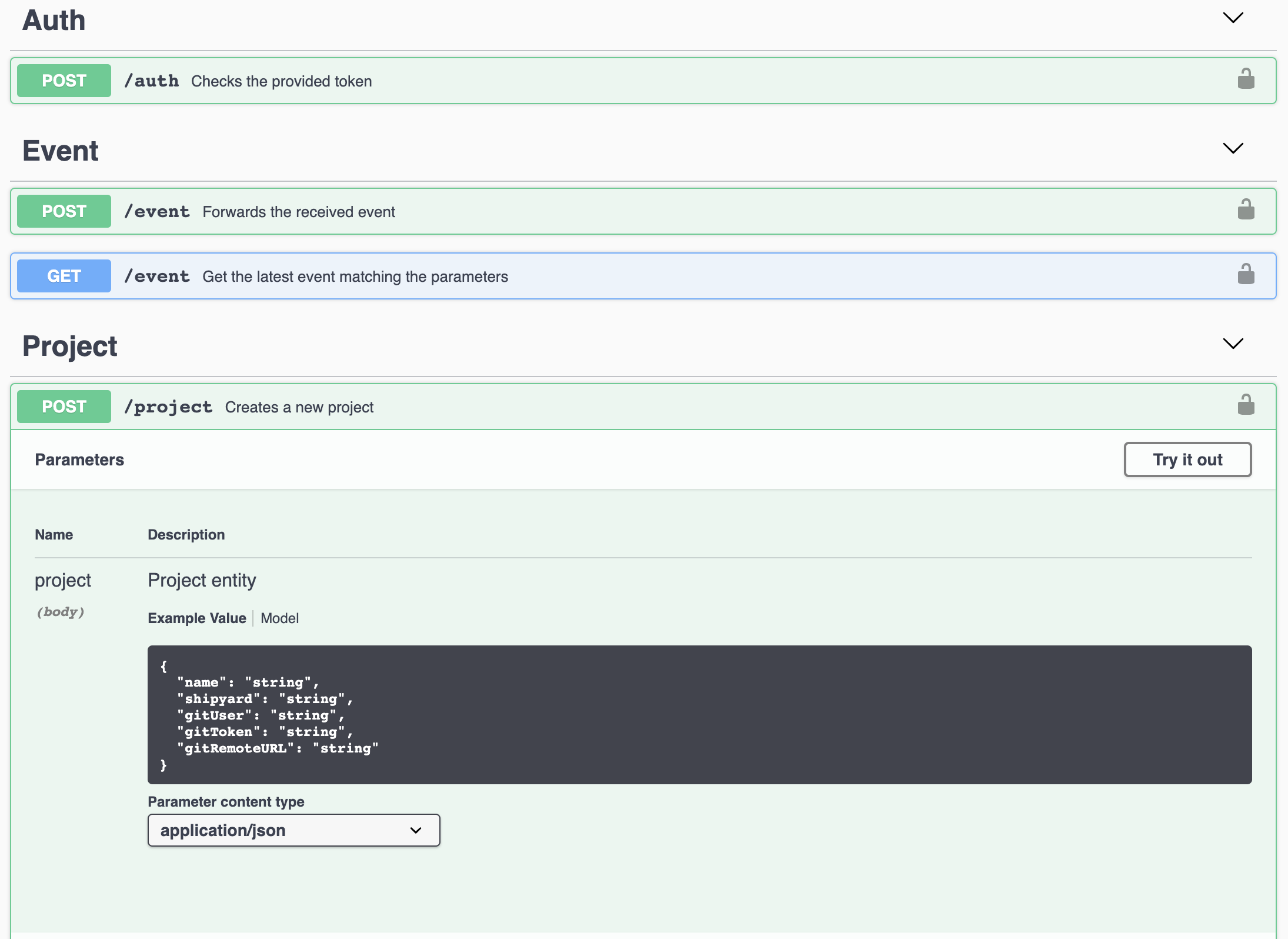Home / Keptn v1 Docs / Release 0.15.x / Reference / Keptn API
Keptn API
In this section, the functionality and commands of the Keptn REST API are described.
Prerequisites
-
To access the Keptn API, a running Keptn installation is needed. If you have not set up Keptn yet, please start here.
-
To get the API token for authenticating API calls, please see here.
Access the Keptn API
The Keptn API is documented in terms of a Swagger API documentation.
-
Use the Keptn CLI to retrieve the endpoint of your Keptn API via the command
keptn status:keptn statusStarting to authenticate Successfully authenticated CLI is authenticated against the Keptn cluster http://YOUR.DOMAIN/api -
Access the Keptn Swagger API documentation in your browser at: http://YOUR.DOMAIN/api
-
The index page of the Swagger API documentation looks as follows:
Keptn Swagger API documentation
Explore the Keptn API
-
Select one of the two API collections:
-
api-servicecontains endpoints to authenticate, get Keptn metadata, create/delete a project, to create service, and to send/get events. -
configuration-serviceprovides GET endpoints for project/stage/service and endpoints for resource management. -
mongodb-datastoreprovides GET endpoint to retrieve Keptn events.
Select API -
-
Clicking on an endpoint reveals more details how to use it, including definitions and examples of the payload.
Keptn Swagger API documentation - Example
Architecture Details of Keptn API
Keptn 0.6.2 introduced an NGINX as new K8s deployment and service called api-gateway-ngnix shown in the figure below. This NGINX allows to route the traffic and ensures that all requests are authenticated using the /auth endpoint of the api-service.
- The
api-servicenow does not implement endpoints of theconfiguration-serviceanymore. - The
configuration-serviceis exposed to the public. Endpoints that are not intended to be used from the public (e.g., deleting a project) are marked and the description is accordingly adapted. - The
mongodb-datastoreis exposed to the public. Endpoints that are not intended to be used from the public are marked and the description is accordingly adapted.
Architecture of Keptn installation:






